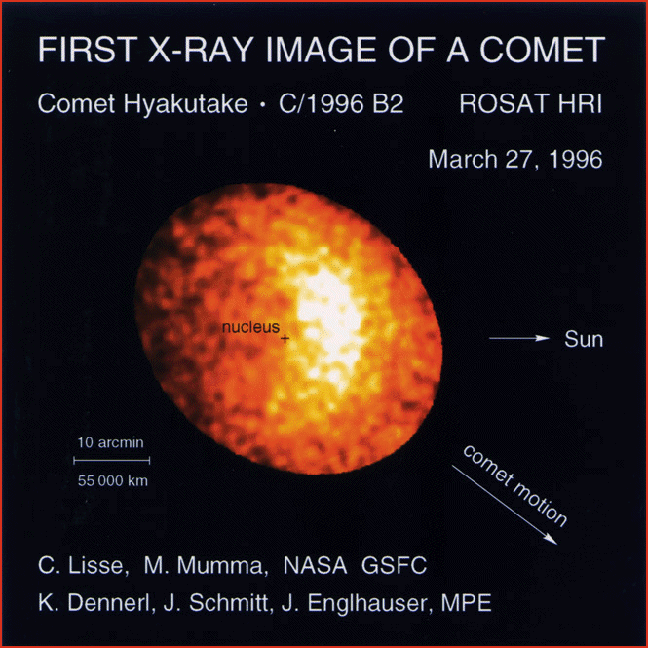|
|
||
 Credit: C. Lisse, M. Mumma (NASA/GSFC), K. Dennerl, J. Schmidt, and J. Englhauser (MPE) |
||
|
pic of the day Links:
Society for
|
Aug 24, 2004 A comet is believed to be a dirty snowball slowly wasting away in the heat of the Sun. But this ROSAT image from March 27, 1996 reveals a comet radiating x-rays as intense as those from the x- ray stars that are ROSAT's usual target. Why point an x-ray telescope at Comet Hyakutake? Nothing in accepted theory would lead an astronomer to expect a comet to shine in x-rays. A comet is believed to be a dirty snowball slowly wasting away in the heat of the Sun. But this ROSAT image from March 27, 1996 reveals a comet radiating x-rays as intense as those from the x- ray stars that are ROSAT's usual target. The x-rays flickered over a matter of hours like a failing fluorescent lamp. The Electric Universe contends that this is more than a simile: A comet is a light-producing load in the circuit of an electrically powered Sun. The Sun's radial electric field is weak but constant with distance in interplanetary space. In a constant radial electric field, the voltage decreases linearly with distance. A comet on an elongated orbit spends most of its time far from the Sun and acquires a charge in balance with the voltage at that distance. But when a comet speeds inward for a quick spin around the Sun, the voltage of the comet becomes increasingly out of balance with that nearer the Sun. Most of the voltage difference between the comet and the solar plasma is taken up in a double layer of charge, called a plasma sheath, that surrounds the comet. When the electrical stress is great enough, the sheath glows and appears as the typical comet coma and tail. Diffuse electrical discharges occur in the sheath and at the nucleus, radiating a variety of frequencies, including x-rays. The highest voltage differences occur at the comet nucleus and across the plasma sheath. So where the sheath is most compressed, in the sunward direction, the electric field is strong enough to accelerate charged particles to x-ray energies. That explains the crescent-shaped x-ray image in relation to the comet nucleus and the Sun. Flickering and occasional flare-ups are expected because plasma discharges behave in a non-linear manner. For more about comet x-rays and surprising results of Deep Space 1's encounter with comet Borrelly, see: |
|
|
Copyright 2004: thunderbolts.info |
||
